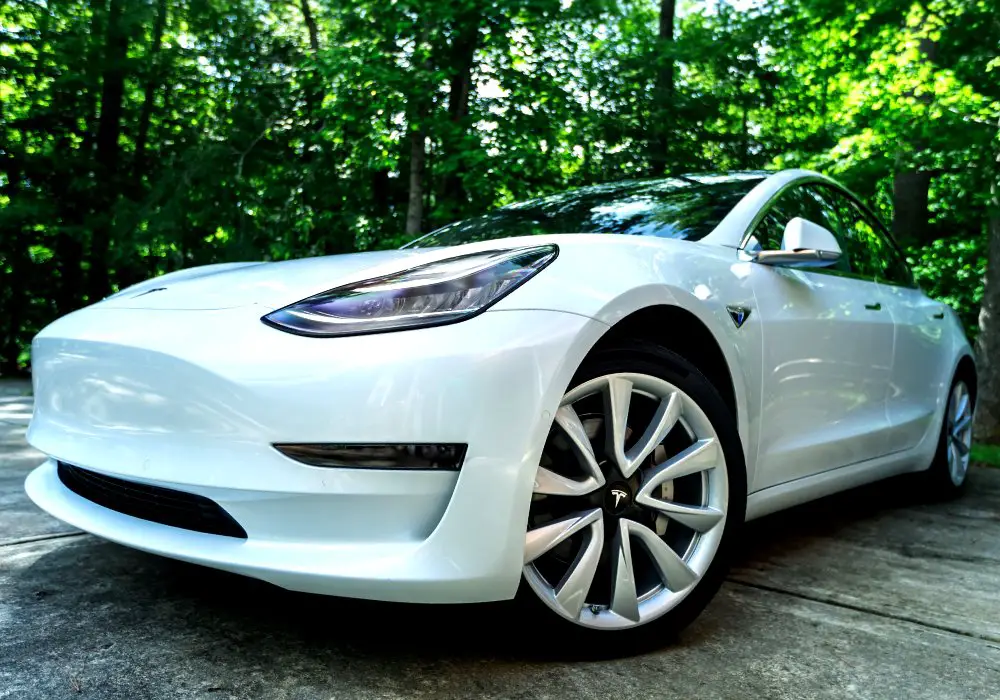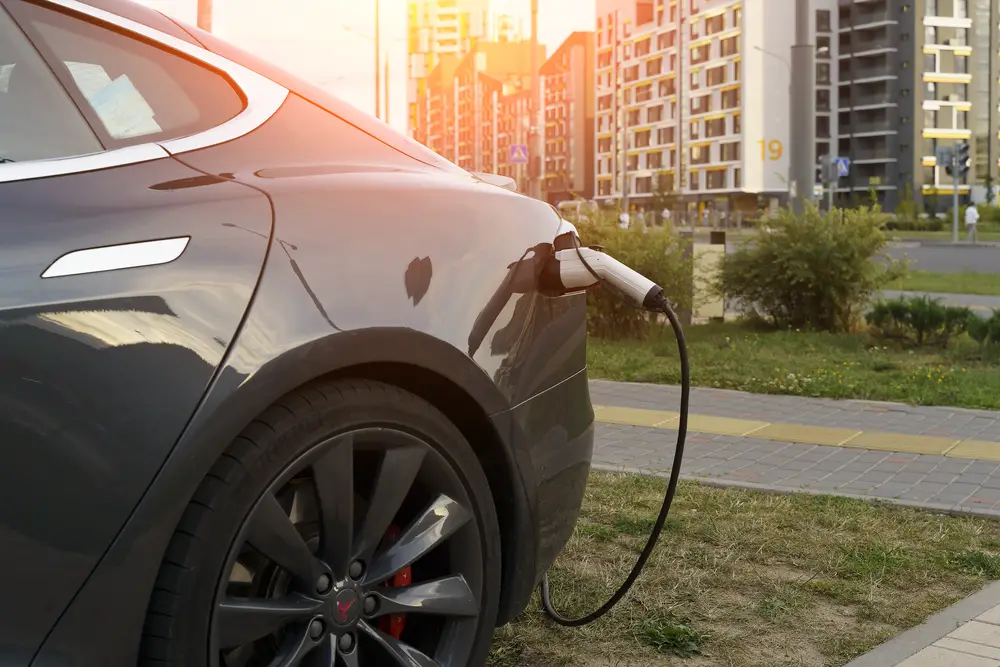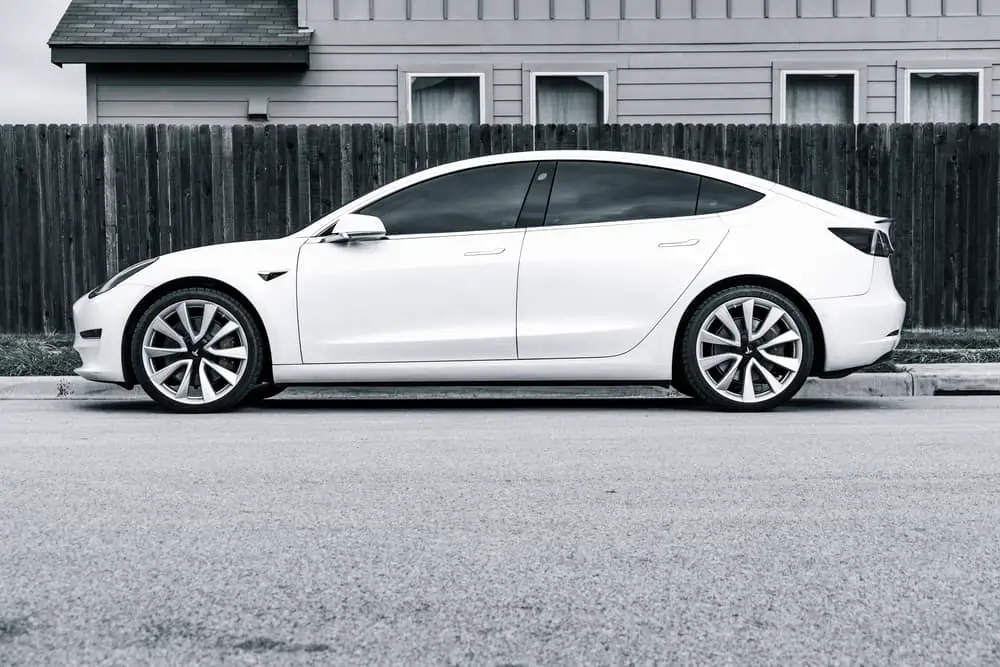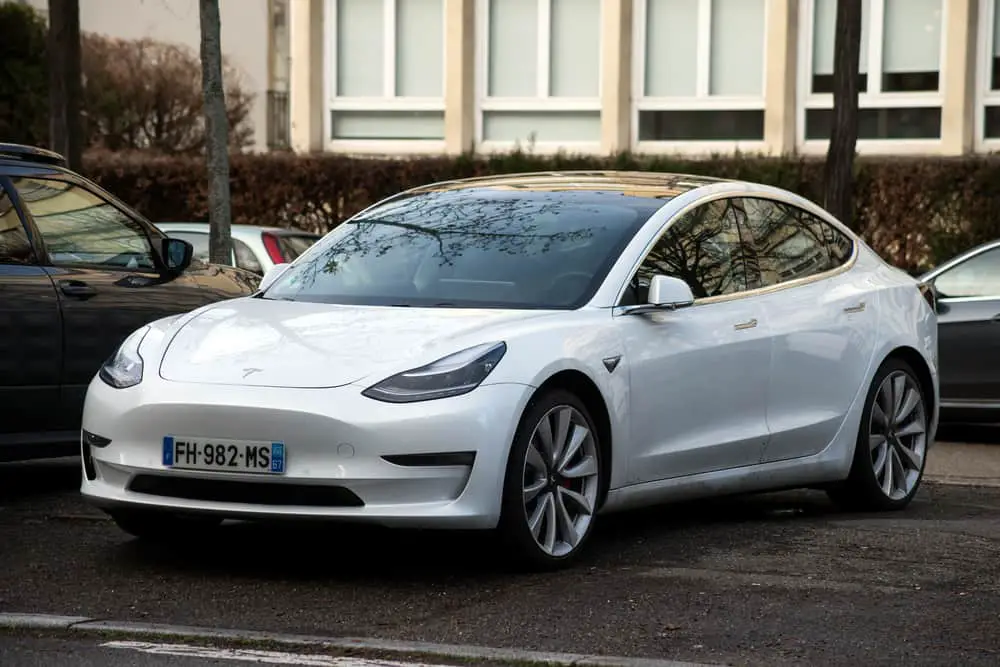One of the most innovative and exciting advancements in the automotive world is the development of electric vehicles, and Tesla has played a significant role in pushing these environmentally friendly cars into the mainstream.
Understanding the factors that impact battery life becomes essential when owning an electric vehicle.
Quick Answer:
A Tesla can generally sit for about two weeks without substantial battery loss, though this can vary with factors like model, battery age, charge state, and energy settings. The “Energy Saving” mode can help extend battery life when the car is idle.
A Tesla, like any other EV, depends on its battery pack to store and provide energy for both driving and running onboard systems.
When parked and not in use, the vehicle still consumes a small amount of energy to maintain these vital systems, which can eventually drain the battery if left unattended for extended periods.
Tesla Battery Basics
Lithium-Ion Batteries
Tesla electric vehicles use lithium-ion batteries similar to those found in laptops and smartphones. These batteries have a high energy density and can store a lot of energy in a relatively small space. Unlike traditional gasoline cars, electric vehicles like Teslas rely on battery power to keep moving.
Battery Capacity
Tesla offers different battery capacity options for its vehicles, measured in kWh (kilowatt-hours). Battery capacity determines how much energy the battery can store and directly impacts the vehicle’s range.
For example, a Model 3 with a Standard Range Plus battery has an estimated range of 263 miles, while a Long Range version extends that number to 353 miles. The larger the battery capacity, the longer distance a Tesla can travel without needing to recharge.
Battery Life
Over time, the battery life of a Tesla may decrease due to various factors, such as charge cycles and temperature fluctuations. However, Tesla has designed its batteries to endure daily use for many years.
While battery degradation is inevitable, most Tesla owners report losing only about 5-10% of their battery capacity after 100,000 miles.
To maximize battery life, Tesla recommends:
- Avoiding parking in extremely hot or cold temperatures when possible.
- Maintaining a 50% to 90% charge level for daily use.
- Using the car’s built-in App for setting charging limits and scheduling.
Factors Affecting Discharge Rate
Temperature
Temperature plays a significant role in the discharge rate of a Tesla battery. In extreme heat or extreme cold, the battery may discharge at a faster rate than in more moderate conditions.
This is because the temperature affects the battery’s chemistry, which can lead to increased power consumption.
In a garage that provides insulation against outdoor temperatures, the discharge rate may be slower compared to being parked outside. It’s recommended to maintain a moderate temperature in the garage or parking area to reduce the impact on battery discharge.
Sentry Mode
Sentry Mode, when activated, uses the car’s cameras and sensors to monitor the surroundings for potential threats. While this feature is useful for security, it also consumes additional power and may increase the discharge rate of the battery.
If you don’t need Sentry Mode active during long-term parking, consider disabling it to preserve battery life.
Cabin Overheat Protection
Cabin Overheat Protection is a feature that helps prevent the interior temperature of the vehicle from rising above a specified threshold. This can protect the car’s electronics and maintain a comfortable environment for passengers.
However, using Cabin Overheat Protection can also consume power and lead to an increased discharge rate.
Charging Your Tesla
When it comes to charging your Tesla, there are multiple options available to suit your needs.
Home Charging
The most convenient way to charge your Tesla is at home, using a dedicated charging station or a simple wall outlet. Here’s what you need to know about home charging options:
- Tesla Wall Connector: Installing a Tesla Wall Connector at your home provides the fastest charging speeds. It is the recommended solution for daily charging.
- NEMA 14-50 outlet: This is a common high-power outlet found in many homes. It provides a decent charging rate and is a more affordable option compared to the Wall Connector.
- Standard wall outlets: Although charging from a standard 120V wall outlet is the slowest option, it may be suitable for occasional or emergency charging if no other options are available.
Remember, charging your Tesla overnight allows for ample charge to be stored in the battery for the next day’s journey.
Superchargers
Tesla’s proprietary network of Superchargers offers fast and reliable charging for long-distance travel. Here are some key details about Superchargers:
- Speed: Superchargers can recharge your Tesla at an incredibly quick rate, providing up to 200 miles in just 15 minutes.
- Locations: There are over 25,000 Superchargers worldwide, strategically located along major routes and near amenities for your convenience.
- Ease of use: Your Tesla will automatically calculate the most efficient route and charging stops when planning a journey using the onboard navigation system.
Third-Party Charging
In addition to Tesla’s extensive charging network, there are numerous third-party charging options available. Here’s what you need to know:
- Compatible charging stations: Tesla vehicles can be charged using most public charging stations, including those with J1772 and CCS connectors, by using an adapter.
- Networks: Various charging networks like ChargePoint, EVgo, and Electrify America provide a vast array of charging stations across the US.
- Charging speeds: Depending on the provider and their charging infrastructure, you may encounter a wide range of charging speeds at third-party stations.
By using the various charging options mentioned above, you can minimize charging time and maximize your Tesla’s driving range for a seamless driving experience.
Tesla App and Settings
State of Charge
The Tesla app allows owners to keep an eye on their vehicle’s state of charge even when they are away from it. This is especially important when considering how long a Tesla can sit without charging.
With the app, you can quickly see the current battery percentage and estimated remaining range. In the settings, you can also set reminders to alert you when the battery level reaches a specific threshold, ensuring you never forget to charge your vehicle.
Charging Speed
Another useful feature within the Tesla app is the ability to monitor your vehicle’s charging speed. This can help you determine how long it will take for your Tesla to recharge, enabling you to plan your schedule accordingly.
The app provides real-time charging information, such as:
- Current charging speed in miles per hour or kilometers per hour
- Estimated time remaining until fully charged
- Total energy added since plugging in
Software Updates
Tesla vehicles continuously receive software updates to enhance their functionality and performance, some of which may affect the vehicle’s charging and energy management.
By using the app and checking the settings on your in-car touch screen, you can keep up-to-date with these improvements and any changes that may impact how long your Tesla can sit without charging.
The app also enables you to remotely initiate software updates, ensuring your vehicle always has the latest features and optimizations.
How Long Can a Tesla Sit Uncharged?
Daily Basis
On a daily basis, a Tesla can comfortably sit unused without charging. Most Teslas have a range between 250 to 350 miles on a single charge, which allows them to remain parked for a few days without losing significant battery capacity.
Assuming minimal energy drain from the onboard electronics, you can generally expect a mere 1% to 2% battery loss per day when the car is idle.
Months Without Charging
When it comes to leaving a Tesla uncharged for several months, there are a few factors to consider. Battery degradation will eventually occur over time, but this typically takes years rather than months to significantly impact the vehicle’s range.
Additionally, Teslas have an energy-saving “Deep Sleep Mode” that minimizes power draw when parked for extended periods.
However, it is not recommended to leave your Tesla uncharged for months at a time. If you plan on not driving your Tesla for an extended period, it’s a good idea to maintain at least a 50% charge to keep the battery healthy.
| Duration | Recommended Charge Level |
|---|---|
| Daily Basis | 80% to 90% |
| Weeks | 50% to 80% |
| Months | 50% minimum |
Low Battery Warning
A helpful feature of Tesla’s is the low battery warning system. When the charge level drops below a certain threshold, the vehicle alerts you to recharge the battery. This serves as both a reminder and a safety precaution, helping to ensure that you don’t get stranded with a depleted battery.
As a rule of thumb, avoid letting your Tesla battery charge drop below 20% to prevent potential damage to your vehicle’s range and overall battery health.
Tips for Prolonging Battery Life
Maintain Temperature
In order to prolong your Tesla’s battery life, it is essential to maintain an optimal temperature for the battery. Extreme temperatures, both hot and cold, can negatively impact the battery’s efficiency and long-term health. To keep the battery in good condition, park in a shaded or temperature-controlled area when possible. Additionally, you can use the mobile app to schedule preconditioning of the battery, which adjusts the temperature of the battery before use.
Enable Stand-By Mode
Stand-By mode is a useful feature to enable when your Tesla is parked for an extended period of time. This mode minimizes the energy-consuming systems and helps reduce “vampire drain”, a phenomenon where the battery loses charge due to idle systems running in the background.
To enable Stand By mode, navigate to your vehicle’s settings and select the appropriate options for energy-saving modes.
Minimize Use of Accessories
Using accessories like the air conditioning or entertainment system can consume a significant amount of energy, leading to a quicker battery drain.
When your Tesla is not in use and not charging, try to minimize the use of accessories in order to preserve battery life. If you must use them, make sure to limit their usage time to conserve energy.
Travel and Long-Term Parking
Airport Parking
When you’re traveling and need to leave your Tesla at the airport for an extended period, it’s essential to plan for parking and charging. Most airports now offer electric vehicle (EV) charging stations. If possible, secure a spot at these stations to ensure your car remains charged throughout your trip.
However, if charging stations are unavailable, don’t stress. Teslas have a low-power standby mode that minimizes battery drain when not in use.
For instance, a fully charged Model S or X can typically last up to two weeks without charging, while a Model 3 can last up to three weeks. To minimize battery depletion, turn off features like Sentry Mode, Cabin Overheat Protection, and Smart Summon.
Vacation Planning
For Tesla owners planning a vacation, consider these tips to optimize your EV’s battery life and ensure your electric car is ready to go when you return:
- Check charging options: Research your destination for nearby Tesla Superchargers, Destination Chargers, or other charging options to guarantee your Tesla remains charged throughout your vacation.
- Use energy-saving features: Enable energy-saving features like Range Mode and Regenerative Braking to help conserve battery life and extend your Tesla’s range.
- Minimize phantom drain: Phantom drain is the slow depletion of your Tesla’s battery when not in use. To minimize this, ensure all doors, windows, and the trunk are fully closed, and turn off non-essential features like Sentry Mode or Cabin Overheat Protection.
- Monitor remotely: The Tesla mobile app allows you to check your vehicle’s status, including battery level. Keep an eye on your battery life and make adjustments as necessary while you’re away.
Other Considerations
Battery Maintenance
When leaving a Tesla sitting without charging, it’s important to consider battery maintenance.
Over time, the battery will slowly consume power, even when not in use. It’s a good idea to keep the battery at a charge level between 20% and 80% when storing for extended periods. This helps to minimize capacity loss and prolong the overall battery life.
Tire Condition
While your Tesla is sitting, the tires can develop flat spots due to the weight of the vehicle pressing down on the tires.
To avoid this, it’s recommended to:
- Inflate the tires to the manufacturer’s recommended pressure
- Move the vehicle slightly every few weeks to rotate the contact points on the tires
- Use tire cradles or tire mats for long-term storage
Selling a Tesla
If you’re considering selling your Tesla after it has been sitting for an extended period, it’s essential to keep a few points in mind:
- Ensure the battery has been properly maintained and is not heavily discharged
- Have a mechanic inspect the vehicle, particularly the tires and braking system, before listing it for sale
- Make sure all software updates are installed, including any relevant Autopilot features, as this can make the vehicle more appealing to potential buyers
By considering battery maintenance, and tire condition and preparing your Tesla for sale, you can better preserve the value and performance of your electric vehicle during periods of inactivity.





